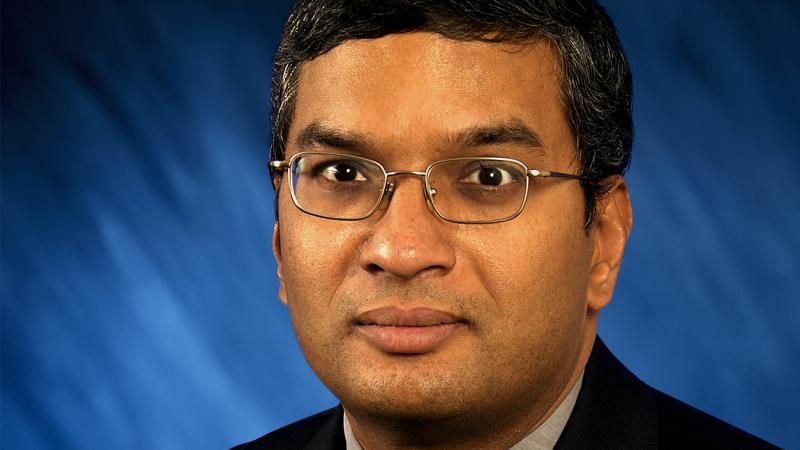Alexander Graham Bell Medal is highest honor given by IEEE in field of communications and networking
December 20, 2017

Rensselaer alumnus Nambi Seshadri ’86 has been selected to receive the 2018 IEEE Alexander Graham Bell Medal, the highest honor conferred by IEEE in the field of communications and networking, for his “contributions to the theory and practice of wireless communications.”
“We are delighted with the news of this great honor for Dr. Seshadri,” said Rensselaer School of Engineering Dean Shekhar Garde. “Networking and wireless communications are driving the fourth industrial revolution, and Dr. Seshadri’s work is at the forefront of it. This medal is a testament to how Rensselaer graduates are changing the world for the better.”
Until January 2016, Seshadri was senior vice president and CTO of the broadband and connectivity group at Broadcom Corporation, where he was responsible for many of the wireless initiatives, spearheading the development of technologies such as 2G, 3G, and 4G cellular communications, mobile multimedia, low-power WiFi, and many others.
Prior to to joining Broadcom Corporation, Seshadri was a longtime member of the technical staff at AT&T Bell Lab Laboratories and head of communications research at AT&T Shannon Labs. When he arrived at Bell Labs, Seshadri was asked to work on reliable digital speech communications for what is known today as 2G cellular systems. Along with Bell Labs colleagues Carl-Erik Sundberg, Richard Cox, and Joachim Hagenauer, Seshadri devised methods to analyze the effect of wireless channel impairments on state-of-the-art speech coders and built novel error-protection schemes that ensured reliable speech communications. These techniques influenced the development of 2G cellular systems.
A decade later at Bell Labs, Seshadri and his colleagues pioneered techniques for wireless communications using multiple transmit antennas. These techniques created a new field of wireless communications called space-time coding, which has influenced the development of cellular as well as Wi-Fi systems that we have used for well over a decade and continue to use today.
He was elected fellow of the Institute of Electrical and Electronic Engineers (IEEE) in 2000, and was elected to the National Academy of Engineering (USA) in 2012 and as a foreign member of the Indian National Academy of Engineering in 2013. He holds approximately 200 patents. He was a co-recipient of the IEEE Information Theory Paper Award in 1999 for his paper with Vahid Tarokh and Robert Calderbank on space-time codes and his JSAC paper on space-time coding modems (co-authored with Tarokh, Calderbank, and Ayman Naguib) was selected by IEEE Communication Society for publication in “The Best of the Best: Fifty Years of Communications and Networking Research” in 2003.
Seshadri is currently professor of electrical and computer engineering at University of California, San Diego. He serves as consulting chief technologist to Quantenna Communications and as an adviser to several startups. Seshadri received a B.E. degree in electronics and communications from Regional Engineering College (now NITT), in Tiruchirapalli, India, in 1982, and an M.S. and Ph.D. from Rensselaer Polytechnic Institute, in 1984 and 1986, respectively.
The IEEE Alexander Graham Bell Medal was established in 1976 by the IEEE Board of Directors, in commemoration of the centennial of the telephone’s invention, to provide recognition for outstanding contributions to telecommunications.